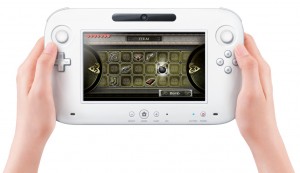Reggie Fils Aimes to Deceive
Nintendo of America president, Reggie Fils-Aime, has taken to the airwaves this week in order to sell the new Wii U console, and in so doing has been telling some shocking untruths. When chatting to a largely ignorant CNN, Reggie dropped the megaton bombshell that multi-platform games look dramatically better on the Wii U. “The specs are quite different [compared to] the competitive systems, much more graphically intensive. If you do a side-by-side comparison you would actually see that third party games like Call of Duty look dramatically better on our system.”
Reggie’s assertion would be great news for Nintendo if it had not already been proven to be blatantly false by a Digital Foundry analysis on the port, which found that the Wii U version of Call of Duty: Black Ops II was basically identical to the Xbox 360 version in terms of its visual make-up, yet its performance was found to lag significantly behind both the Xbox 360 and PS3 versions. Frame-rate was found to fluctuate between roughly twenty-five and fifty frames per second, marking the Wii U port as a jerky, uneven experience. It is possible that Reggie labours under the false assumption that the Wii U port is more attractive simply because the Wii U affords players considerably more in the way of time to study the artistic beauty of each individual frame of animation. That is to say that slowdown is now a feature.
Wii U CPU Is 1.2GHz
When speaking of future console releases from Sony and Microsoft, Reggie Fils-Aime this week blithely predicted that: “It’s likely that faster processors and pretty pictures won’t be enough to motivate consumers. They need to react to what we’ve done and we need to continue innovating with the Wii U and we will.” Reggie had best hope that he is correct in this assessment, as it has been discovered this week that the Wii U has one of the most legendarily underpowered CPUs of any mainstream console in recent memory.
The discovery was made by a hacker known as Marcan, who is a member of the hacker groups Team Twiizers and fail0verflow. Essentially the Wii U CPU consists of a three-core derivative of IBM’s PowerPC 750 clocked at just 1.2GHz – the CPU is based on the same 1997 architecture which powered Nintendo’s 2001 GameCube system, albeit given an overclock and a significantly larger cache. Essentially, Nintendo seem to have deliberately knee-capped their fledgling system in order to retain backwards-compatibility with the Wii’s library, with the Wii U’s CPU possessing less computational juice than many modern smartphones and tablets. Incidentally, the speed of the Wii U’s GPU was also revealed to be 549.9MHz, yet this does not really indicate much about the console’s graphical performance, other than the fact that the graphics chip is operating at the same frequency as the XBox 360′s GPU.
This is not to say that the Wii U’s computing performance will necessarily be as gutless as a smartphone. Despite its inherent lack of power, the Wii U’s CPU is still likely to be more robust than a higher-clocked multi-core smartphone chip, but that they should even be compared is an utter travesty in itself. The Wii U CPU is capable of out of order processing, which may make up some lost ground through greater efficiency yields. Moreover, its general purpose GPU is capable of doing some of the heavy lifting for computing physics – yet crucially, it is looking increasingly unlikely by the day that the Wii U will ever be capable of more than simply equaling the performance profile of the PS3 and Xbox 360 consoles.
Nintendo To Launch New Wii-branded Console Hardware This Holiday Season
No, this is not a belated announcement that the Wii U has finally gone on sale; rather, Nintendo in their infinite wisdom have decided to launch a new iteration of Wii hardware in Canada during the busy Christmas season, and ironically this hardware revision looks more like a new console than does the Wii U.
The new model is aptly titled the Wii Mini,and comes in a diminutive black casing with red trim, providing a distinctly different and striking visual impression to either the Wii or the Wii U, which are practically indistinguishable from one another. The Wii Mini is launching on the 7th of December in Canada for $99, though this price-tag does come with a couple of heavy hardware compromises, as the Wii Mini strips out internet functionality and GameCube backwards compatibility. The new hardware is expected to launch in America in January 2013, where it is almost certain to baffle already fragmented and confused Nintendo customers.


